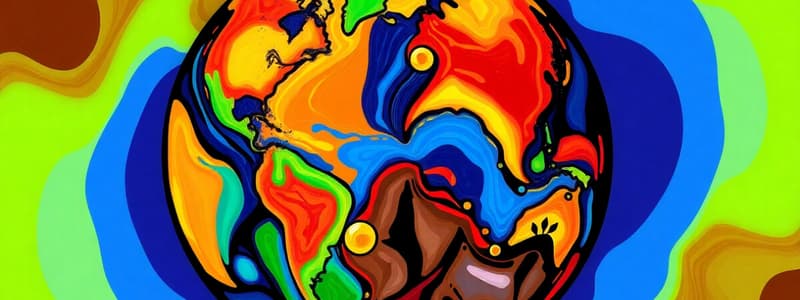Podcast
Questions and Answers
What type of rock is most useful in a structure to contain nuclear waste and prevent leaks?
What type of rock is most useful in a structure to contain nuclear waste and prevent leaks?
- Sandstone
- Limestone
- Basalt
- Granite (correct)
Earthquakes are primarily found at transform plate boundaries.
Earthquakes are primarily found at transform plate boundaries.
True (A)
What geological disaster can be mitigated by strengthening building codes and installing seismometers?
What geological disaster can be mitigated by strengthening building codes and installing seismometers?
earthquakes
The idea that all continents were once connected as a supercontinent is known as _____ .
The idea that all continents were once connected as a supercontinent is known as _____ .
Match the geological terms with their descriptions:
Match the geological terms with their descriptions:
Flashcards
What type of rock is best for containing nuclear waste?
What type of rock is best for containing nuclear waste?
Granite is the most suitable rock for storing nuclear waste because it is very dense and impermeable, preventing leaks.
Where do earthquakes and volcanoes occur?
Where do earthquakes and volcanoes occur?
Earthquakes and volcanoes typically occur at plate boundaries, specifically where two plates interact.
What causes an aquifer to form?
What causes an aquifer to form?
Aquifers form when groundwater flows through spaces between soil grains, usually sand or gravel, due to gravity.
What is a divergent plate boundary?
What is a divergent plate boundary?
Signup and view all the flashcards
What is the theory of plate tectonics?
What is the theory of plate tectonics?
Signup and view all the flashcards
Study Notes
Rock Properties for Nuclear Waste Containment
- Granite is a suitable rock type for containing nuclear waste due to its durability and ability to prevent leaks.
Earthquake Mitigation Strategies
- Strengthening building codes and installing seismometers can reduce earthquake damage.
- Evacuating mountainous regions can help save lives during earthquakes or landslides.
Landslides and Water Flow
- Water flows through soil due to gravity, filling spaces between soil grains.
- Aquifers are often found between layers of gravel or sand.
- Sandstone is a suitable rock for aquifers.
Plate Tectonics and Geological Phenomena
- Earthquakes are a primary phenomenon at transform plate boundaries.
- New lithosphere forms mainly at divergent plate boundaries.
- The Earth's crust is composed of rock.
- Temperature differences are needed for convection currents to occur.
- Divergent boundaries occur when plates move apart.
- Convergent boundaries occur when plates collide.
- Transform boundaries occur when plates slide past each other.
- Continental drift describes the movement of continents from a unified landmass (Pangaea).
- Plate tectonics theory suggests that plates are mobile, supported by the fitting of continents like puzzle pieces.
Studying That Suits You
Use AI to generate personalized quizzes and flashcards to suit your learning preferences.




